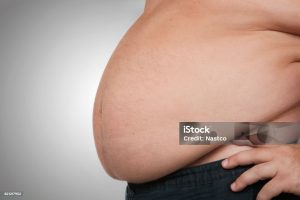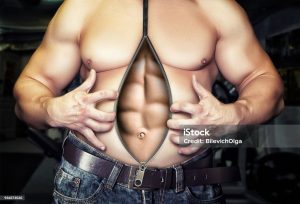Best method for weight loss and building dream body in 2023

Introduction
For a long time, people have been asking me to write a blog post on this topic, so here it is: the best strategies for losing fat and achieving your ideal body. This post will not only cover the most effective methods for fat loss but also address how those who are lean and want to gain muscle and some weight can achieve their goals. Understanding fat loss and gain will give you the knowledge to adjust your weight according to your needs.
By grasping the principles of fat and weight management, you’ll be able to control your body composition without relying on trainers, expensive diet programs, or pre-made diet plans. I’ll provide you with the tools and information you need to take charge of your fitness journey on your own.

Myths about fatloss
Before diving into the right approach for fat loss and body transformation, it’s important to address the myths and misinformation that are rampant online. The majority of videos, blogs, and articles you come across are often misleading. Many content creators don’t genuinely understand the process of achieving fat loss or muscle gain; instead, they manipulate their audience with clickbait and false promises. Their goal is to attract attention and sell products or services, rather than providing accurate and actionable advice.
These sources often avoid discussing the harsh realities of weight management because the truth is less appealing and doesn’t attract as much attention. Instead, they focus on sensational claims and techniques that are either ineffective or misleading. Understanding this will help you approach the information you find with a more critical eye and guide you toward more reliable and effective methods for reaching your fitness goals.

So, for example, I’ll tell you some of the things that these so-called fitness trainers and so-called experts in the field of fitness say online.
Claims like drinking boiled water with lemon and honey or doing specific exercises like planks or crunches to lose belly fat are completely unfounded. These so-called methods do not contribute to meaningful fat loss and are often just tactics to attract attention or sell products. Many sources peddling these ideas lack genuine understanding and are more interested in profiting from misleading information.
Finding authentic advice in today’s market can be challenging, as many are focused on quick hacks rather than effective strategies. The reality is that there are no shortcuts or quick fixes for losing weight. Effective fat loss requires a balanced approach involving proper diet, exercise, and lifestyle changes. Be cautious of anyone promising easy solutions and focus on reliable, evidence-based methods for achieving your fitness goals.

Harsh Reality
There’s no shortcut to effective weight management, whether it’s losing fat or gaining muscle. The idea that you can achieve significant results in just a few days or weeks is unrealistic. Real progress in either direction—whether slimming down or bulking up—requires a sustained commitment over several months.
If achieving such results were as simple as following quick hacks, everyone would be in ideal shape. The fact that many people still struggle with significant weight issues despite the availability of various quick-fix solutions highlights the reality: genuine, lasting change demands patience, hard work, and consistency. There are no magic solutions; real results come from adhering to a disciplined and well-structured approach.

Achieving true fitness is a long-term commitment rather than a short-term endeavor. Rapid fixes or crash diets might deliver temporary results, but they often lead to regaining the weight once old habits resurface. Instead of chasing quick solutions, focus on adopting a sustainable, healthy lifestyle. This means making lasting changes to your eating habits, exercise routine, and overall wellness practices.
Building and maintaining fitness should be seen as an ongoing journey. Emphasizing long-term health and fitness goals will not only help you achieve your desired physique but also ensure you can sustain it throughout your life. Prioritizing a balanced, consistent approach is key to lasting success and overall well-being.

Calorie in Calorie out Principle
To effectively lose fat and reduce weight, it’s crucial to grasp the fundamental concept of energy balance. This principle revolves around the concept of calories in versus calories out.
Calories in refer to the energy you consume through food and beverages. Calories out encompass the energy your body uses for its daily functions and physical activities. Your body requires a certain amount of calories to maintain basic physiological functions, like breathing and digestion, which is known as your Basal Metabolic Rate (BMR).
To shed fat, you need to create a calorie deficit, meaning you consume fewer calories than your body expends. This forces your body to use stored fat as an energy source, leading to fat loss. Conversely, to gain weight, you need a calorie surplus, where you consume more calories than you burn.
Understanding this balance is crucial. Simply put, effective fat loss is achieved by:
1. Calculating Your Daily Caloric Needs: Determine how many calories you need to maintain your current weight.
2. Creating a Caloric Deficit: Consume fewer calories than your daily requirement. This can be achieved through dietary changes, increased physical activity, or a combination of both.
3. Maintaining a Balanced Diet: Ensure your diet is nutritious, providing essential vitamins and minerals, even while reducing calories.
4. Regular Exercise: Incorporate both cardio and strength training to enhance calorie burn and preserve muscle mass.
By following these principles, you can manage your weight more effectively and achieve your fat loss goals.

Maintenance calories are the number of calories your body needs to maintain your current weight while performing daily activities and sustaining basic bodily functions. If you consume exactly this amount, your weight will remain stable, as you’re neither gaining nor losing fat.
To lose fat, you need to determine your maintenance calories and then create a calorie deficit. This means consuming fewer calories than your body needs to maintain its current weight.
There are numerous resources online that provide methods to calculate your maintenance calories. These often involve estimating your Basal Metabolic Rate (BMR) and factoring in your activity level to determine the total calories you need.
By understanding and managing your calorie intake in relation to your maintenance needs, you can effectively work towards your fat loss goals.

Once you know your maintenance calories, the next step is to understand how to effectively lose weight. For instance, if your maintenance calories are 2000, this is the amount of calories you need to maintain your current weight. To lose weight, you must consume fewer calories than this amount. This concept is known as creating a calorie deficit.
So, if you decide to consume 1700 or 1800 calories daily, you are creating a deficit of 300 to 500 calories per day. This deficit means that your body will not have enough calories from your diet to meet its daily needs. As a result, your body will start to use stored fat as an energy source to make up for the shortfall.
In this process, the stored fat in your body gets broken down and converted into calories that your body uses to maintain its normal functions. Over time, as you consistently maintain this calorie deficit, your body will gradually lose fat, leading to weight loss.

So in the process of maintaining the proper functioning of your body, those extra calories are burned, leading to a gradual reduction in weight. Over a period of time—be it 1 month, 2 months, 3 months, or even 4 months—you will notice a significant decrease in your body weight if you maintain a consistent calorie deficit.
Consistency is crucial. It takes time for your body to use up the stored fat and show noticeable results. By sticking to your calorie deficit plan and being patient, you will gradually achieve your desired weight. This steady approach is the fundamental mechanism of weight loss.

If you’re looking to gain weight, especially if you’re quite lean, the approach remains the same. For example, if your maintenance calorie intake is 2000, you need to consume more. Suppose you eat 2200, 2300, or even 2400 calories each day. Over time, these additional calories that exceed your body’s requirements will either be stored as fat or, if you’re working out at the gym, they’ll contribute to muscle growth. Thus, with consistent extra calorie intake and exercise, you can gradually gain weight over several months, typically 3 to 5 months. This is the fundamental process of weight gain or loss.

